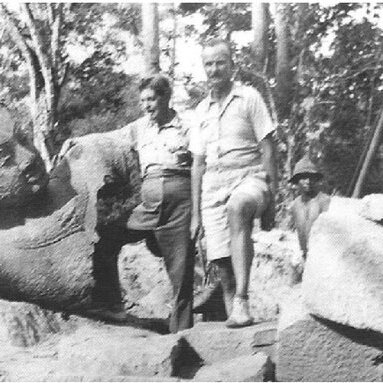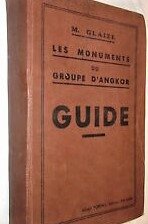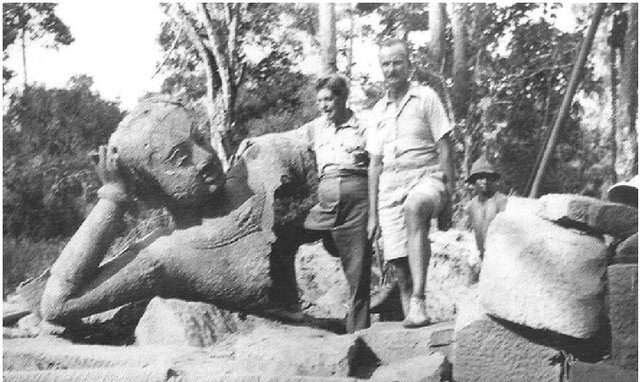Maurice Glaize

Maurice Glaize (26 Dec. 1886, Paris – 17 July 1964, La Rochelle) was a French architect and archeologist, Conservator of Angkor from 1937 to 1945.
Architect-in-chief of Saigon from 1930 to 1934 (where he lived with wife Louise Carlier), he became a permanent member of EFEO in 1936 and took over the post of Angkor Conservator-in-chief the following year, after Georges Trouvé’s tragic death.
Following Henri Marchal’s steps, Maurice Glaize succeeded in adapting the anastylosis method to available resources, value and structural conditions of each building. His work led to a better understanding of the role of architectural representations in Khmer civilization (Neak Pean, West Mebon).
Arrested in Siem Reap by the Japanese forces of occupation on 12 March 1945 with wife Louise née Carlier and two of their children (Gilbert, and Michelle, who was to marry one of the French officers sent by General Leclerc to Angkor in 1946, Colonel Ladevie), they were sent to Phnom Penh and ordered house arrest in an overcrowded townhouse where the Japanese also kept George Groslier, the latter tortured to death by the Kampetai on 18 June 1945, exactly five years after General de Gaulle’s historic ‘Appel de Londres’. Leaving for France in August 1946, he was succeeded at the Conservation d’Angkor by Jacques Lagisquet, while Glaize’s Cambodian secretary, Mok Tourn, kept the works on. [see Podromides, Chronique d’une renaissance.]
His Guide published in 1944 (Les Monuments du groupe d’Angkor, Albert Portail Editeur, Saigon), known as ‘Le Glaize’, became the reference for French-speaking visitors, and has since gone through six re-editions.


